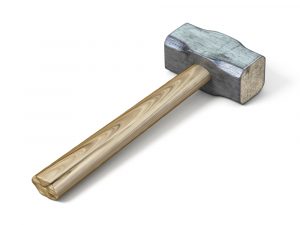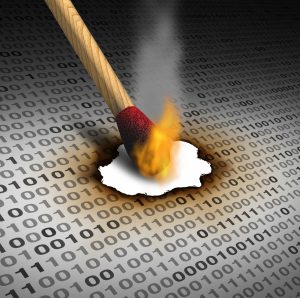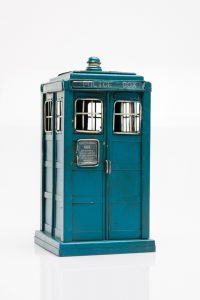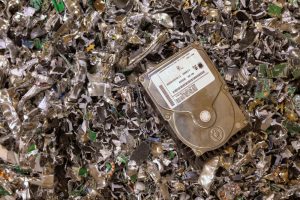In the Restaurant at the End of the Universe, Douglas Adams described a place at the end of time where you could sip champagne while watching the Big Bang happening in reverse. A pretty good evening’s entertainment, but not quite as explosive (or should that be implosive?) as the moment that is taking place before our eyes right now.
The digital revolution is causing both excitement and concern, innovation and re-entrenchment. Thanks to document digitisation, vast archives can be searched in seconds, shared without leaving your laptop and documents need never leave a physical trace. It’s quite the spectacle. While our waiter brings you your choice of fine wine and this evening’s band strikes up a tune, let us pull back the curtain and entreat you to enjoy the end of the world as you know it.
Everything becomes data
Document digitisation allows all your archives to sit in the palm of your hand. You may choose to keep your original hard copies, or you can wave sayonara to them once they have become data. You’re going to have so much space in your empty offices, you’ll finally have room to swing that cat that’s been getting on your nerves. One day you’ll be able to upload the feline as well.
A click away
Have you ever unfolded an A0 technical drawing on your desk? There isn’t much desk left. Storing the thing throws up even more complications. But now they and everything from everyday reports and invoices through to ancient archives and military blueprints can be accessed on a laptop, tablet or even a phone. This isn’t a security issue either, since they can be encrypted beyond the sight of prying eyes. We can scan anything for you and although we haven’t yet scanned the kitchen sink, you might be able to get running water from your phone someday soon.
No out-of-date analogue
Analogue is gripping the cliff edge by its fingertips in the form of DVDs, CDs and Blu-Ray. But much material has already fallen into the ravine and been trampled by a stampede of wildebeest. The good news is that we can silence Scar’s laughter and bring back Mufasa – taking VHS, cassettes, Betamax, reel-to-reel, cine, video and floppy disks, then releasing this captured material into the wild again with digital technology.
What you could once only listen to in an 80s car stereo, you can now enjoy pretty much anywhere. Digital transfers made like this don’t get damaged, lose quality or fade. You can share them across the web or play them on a handheld device. The other good news is that we can convert your analogue materials into any digital form you like. Maybe document digitisation and the end of the world as you know it is also the preservation of the world as you once knew it.
Whatever you need
Nothing needs to be static anymore. Digital formats mean anything goes and we can also easily convert your data from digital to microfilm or microfiche, from microforms to paper and from paper straight back to digital. You are no longer limited to one format and you can get professionals like us to destroy the disused formats when you’re done. We haven’t turned lead into gold yet but our data conversion services are getting close.
Okay, okay, so perhaps this isn’t quite a disaster movie! The end of the world as you know it is actually more of an exciting opportunity rather than a sense of impending doom. All things considered, it’s probably a good thing. If you’d like to make use of one of these digital opportunities, get in touch and we’ll build something truly future-proof together.
 Okay we admit it, we really like destroying things. Obliterating them from the face of the planet. Documents, data, DVDs, hard drives, microfilm, microfiche. There’s never been a moment we haven’t enjoyed annihilating what’s been handed to us. But before you get the wrong end of the proverbial stick, we should clarify exactly what we mean – and, for the purpose of this blog, what we don’t mean – when we say microfiche destruction.
Okay we admit it, we really like destroying things. Obliterating them from the face of the planet. Documents, data, DVDs, hard drives, microfilm, microfiche. There’s never been a moment we haven’t enjoyed annihilating what’s been handed to us. But before you get the wrong end of the proverbial stick, we should clarify exactly what we mean – and, for the purpose of this blog, what we don’t mean – when we say microfiche destruction. It can seem appealing to erase your own digital footprints. It’s the cartoon pleasure of sweeping a brush behind you as you walk, stopping the bad guys from following you. DIY alternatives to
It can seem appealing to erase your own digital footprints. It’s the cartoon pleasure of sweeping a brush behind you as you walk, stopping the bad guys from following you. DIY alternatives to  Document storage is a no brainer. It frees up space in your workplace, saves on storage costs and gives your business breathing room so it can grow in other areas. But what’s the best approach to
Document storage is a no brainer. It frees up space in your workplace, saves on storage costs and gives your business breathing room so it can grow in other areas. But what’s the best approach to  We know what you’re thinking: microfilm destruction sounds like so much fun – can’t I have a go? But just as re-enacting World Wrestling Entertainment can lead to more broken bones than imitators expect, microfilm destruction too is something you should not try at home.
We know what you’re thinking: microfilm destruction sounds like so much fun – can’t I have a go? But just as re-enacting World Wrestling Entertainment can lead to more broken bones than imitators expect, microfilm destruction too is something you should not try at home. Office too cluttered? Bored of filing cabinets? Cloud storage too mainstream? Fear not. Out of our limitless ingenuity we have drawn up these alternatives to the tired status quo.
Office too cluttered? Bored of filing cabinets? Cloud storage too mainstream? Fear not. Out of our limitless ingenuity we have drawn up these alternatives to the tired status quo. Alright, this is it. We may have signed the Official Secrets Act but we judged that releasing this information is in the public interest and is therefore worth the risk. If after reading this you discover we have been incarcerated, I hope you will value our sacrifice. Here are our not-so-secret tips for getting great value from our document scanning service.
Alright, this is it. We may have signed the Official Secrets Act but we judged that releasing this information is in the public interest and is therefore worth the risk. If after reading this you discover we have been incarcerated, I hope you will value our sacrifice. Here are our not-so-secret tips for getting great value from our document scanning service. If you’re a doubter or a hater, we understand. On the surface of things, secure data destruction can seem unexciting. But (straight-face on) we think it is fun. “Why?” You may legitimately ask. Well, that’s what we’re here to tell you.
If you’re a doubter or a hater, we understand. On the surface of things, secure data destruction can seem unexciting. But (straight-face on) we think it is fun. “Why?” You may legitimately ask. Well, that’s what we’re here to tell you. Paper versus digital. To be honest, we’re fans of all sorts of documents so it’s really very hard to pick a favourite. You may as well be asking us to choose a favourite child. How can you compare the tactile experience of holding the printed page with the ease and convenience of a screen based reading experience?
Paper versus digital. To be honest, we’re fans of all sorts of documents so it’s really very hard to pick a favourite. You may as well be asking us to choose a favourite child. How can you compare the tactile experience of holding the printed page with the ease and convenience of a screen based reading experience? So the clocks have changed, we’re almost at the end of a tax year and a new month is just kicking off. Perfect time to announce a range of new services* we’re launching to take Scan Film or Store into the future in style.
So the clocks have changed, we’re almost at the end of a tax year and a new month is just kicking off. Perfect time to announce a range of new services* we’re launching to take Scan Film or Store into the future in style.






